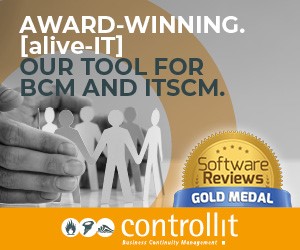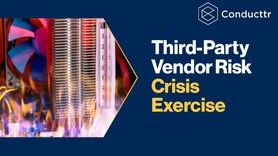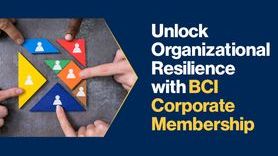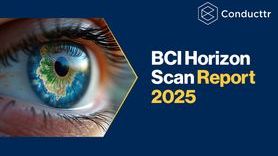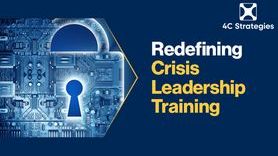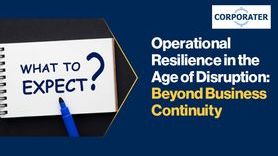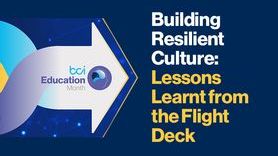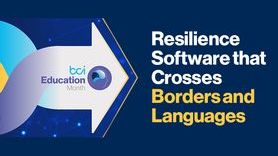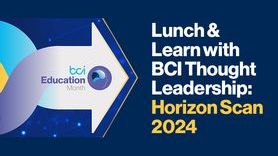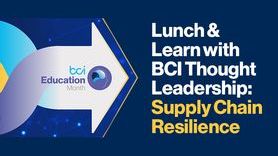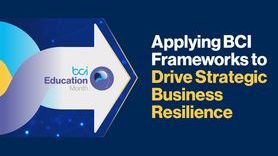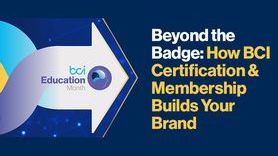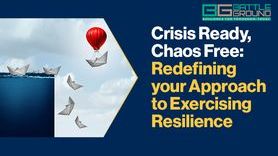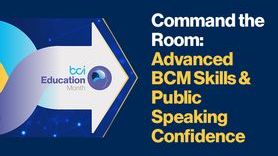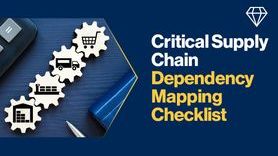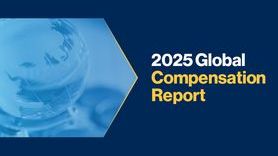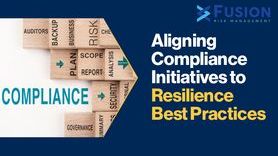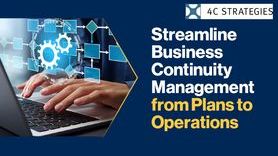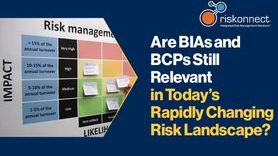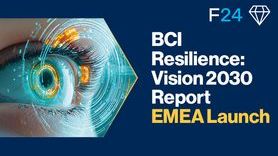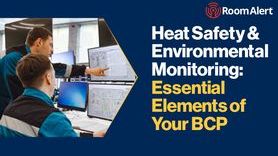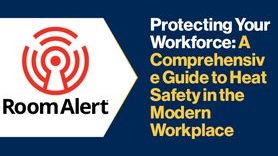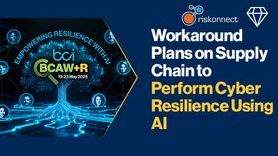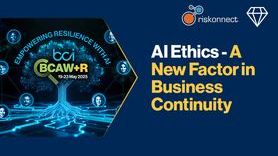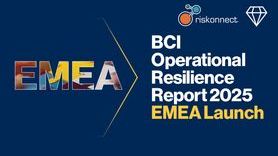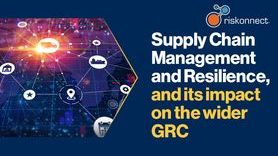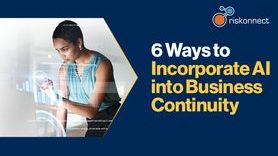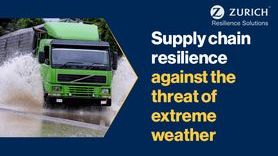Actionable Steps to Map Your Critical Supply Chain Dependencies
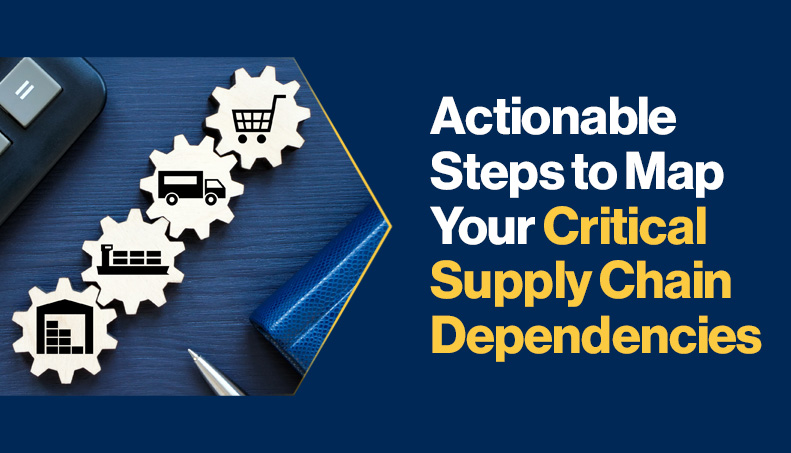
In this article, Maura Santunione MBCI discusses the importance of mapping supply chain dependencies, the regulatory pressures driving change, and practical steps to identify risks. She shares actionable guidance to help professionals strengthen resilience, with a condensed checklist available exclusively for BCI Members.
Actionable Steps to Map Your Critical Supply Chain Dependencies
In today's dynamic global environment, supply chain vulnerabilities pose serious risks. Resilience begins with an accurate context understanding. Mapping your critical supply chain dependencies is a foundational step in identifying vulnerabilities and ensuring business posture because the ability to quickly identify, understand, and mitigate disruptions hinges on a deep understanding of organizational dependencies.
This article outlines actionable steps to systematically map these dependencies, providing practical tips to bolster your organizational resilience.
Why map critical supply chain dependencies?
Mapping critical supply chain dependencies is the cornerstone of proactive resilience, enabling organizations to:
- Identify single points of failure: Uncover where operations are overly reliant on a single supplier, location, or component.
- Assess vulnerabilities: Identify weaknesses in implemented supply chain processes and understand the potential impact of disruptions at various points in your supply chain.
- Prioritise mitigation efforts: Allocate resources effectively to address the most significant risks.
- Improve agility and adaptability: Develop predefined responses to prevent or minimise the impact of unforeseen events.
- Enhance business continuity: Ensure the continued delivery of critical products and services even in the event of operational issues within the supply chain.
The regulatory landscape: driving supply chain resilience
Beyond the inherent business benefits, a growing number of international regulations and national laws are mandating or strongly encouraging companies to enhance supply chain visibility, conduct due diligence, and build resilience. Non-compliance can lead to significant legal actions, reputation damages, and exclusion from public tenders or contracts. Understanding this evolving landscape can be crucial.
Here's a comprehensive table summarising the key regulations, directives, and guidelines categorised by jurisdiction/level and highlighting applicability, requirements, and implications related to supply chain mapping and risk management:
|
Regulation/Guideline |
Jurisdiction / Scope |
Applies To |
Key Requirements |
Implications |
|
EU Corporate Sustainability Due Diligence Directive (CSDDD) |
EU |
Large EU & non-EU firms with significant EU turnover |
Human rights & environmental due diligence across operations and value chains |
Requires deep supply chain mapping beyond Tier 1, with granular risk assessments |
|
NIS 2 Directive (2022/2555) |
EU |
"Essential" and "important" entities in critical sectors |
Cybersecurity risk management, supplier risk assessment, mandatory incident reporting |
Mapping of critical IT/OT suppliers and their cybersecurity posture |
|
Digital Operational Resilience Act (DORA) |
EU |
Financial entities & critical ICT providers |
ICT risk management, ICT third-party monitoring, resilience testing |
Mapping ICT providers and their interdependencies, especially for critical functions |
|
EU Battery Regulation (2023/1542) |
EU |
Economic operators placing batteries in EU (due diligence from Aug 2025) |
Mandatory environmental/social due diligence in battery supply chain |
Drives upstream supply chain mapping for raw materials and components |
|
ESG Reporting / CSRD |
EU |
Expanding scope of EU and non-EU companies |
ESG impact disclosure across value chain |
Requires robust supplier data collection and deep value chain understanding |
|
Germany: Supply Chain Due Diligence Act (LkSG) |
Germany |
German companies with ≥1,000 employees |
Risk analysis of operations and (in some cases) indirect suppliers |
Mandates supplier mapping and risk analysis beyond direct suppliers |
|
France: Duty of Vigilance Law |
France |
French companies (5,000+ domestic or 10,000+ global employees) |
Vigilance plan for identifying and mitigating human/environmental risks |
Comprehensive supply chain mapping with risk prioritization |
|
US Cybersecurity Executive Orders & C-SCRM |
USA |
Federal agencies, contractors, critical sectors |
Map software/hardware supply chains, monitor risks, address foreign dependencies |
Detailed supplier and sub-tier IT/software mapping, especially for critical sectors |
|
US SEC Supply Chain & Climate Risk Rules (2024) |
USA |
SEC-registered public companies |
Disclose climate-related financial and supply chain risks |
Requires understanding where suppliers operate and their climate exposures |
|
UK Modern Slavery Act (Enhanced Expectations) |
UK |
UK companies with £36M+ turnover |
Annual slavery/trafficking statement with supply chain risk identification |
Requires traceability, often to Tier 2, to expose forced labor risks |
|
UN Guiding Principles & OECD Due Diligence Guidance |
International |
All business enterprises |
Identify, prevent, mitigate human rights/environmental impacts |
Advocates end-to-end supply chain due diligence and mapping of business relationships |
|
ISO 22301 & ISO/TS 22318 |
International |
Organizations focused on continuity |
Business Continuity Management System (BCMS); supplier-specific guidance |
Supports mapping supplier dependencies for operational resilience |
These evolving requirements underscore the legal and strategic imperative for robust supply chain dependency mapping.
Step-by-Step guide to mapping critical supply chain dependencies
Step 1: Define critical products, services, and business functions
Before diving into dependencies, an organization must clearly identify what's truly critical to its survival and success. This ensures focus on areas where they matter most.
Action: Execute an impact analysis (BIA) to define essential products/services/processes, assessing the severe consequences of disruption (e.g., revenue, fines, reputation, safety).
Practical Tips: Engage stakeholders (senior management, operations, finance, sales, IT). Quantify broader impacts, review regularly.
Step 2: Identify critical internal resources
Understanding the essential resources for delivering critical products/services and processes is fundamental.
Action: For each critical item from Step 1, identify key resources (e.g., personnel, technology/IT infrastructure, premises, data, equipment, specific financial capabilities) without which delivery would be impacted/impossible.
Practical Tips: Leverage existing documentation (e.g. Value stream maps, BIA outputs, registers). Engage department heads. Consider single points of failure (unique individuals, specific servers/applications, single-facilities). Categorise resource types.
Step 3: Identify direct suppliers for critical items
Once critical assets/resources are defined, identify the immediate external entities that enable their availability.
Action: For each critical item, list all direct suppliers of components/raw materials, services/technologies crucial for its availability.
Practical Tips: Utilise existing data (procurement systems, vendor lists, contracts), involve process owners. Be granular.
Step 4: Map beyond Tier 1: Identify N-Tier dependencies
True resilience and regulatory compliance require understanding of the layers beneath direct suppliers.
Action: For each critical Tier 1 supplier, identify their key suppliers till Tier X, going as deep as practically possible. Focus on inputs critical to your own critical products/services.
Practical Tips: Direct engagement (ask Tier 1 suppliers for sub-supplier info, may require contractual clauses). Leverage industry knowledge. Utilise data analytics tools. Prioritise deeper mapping for high-value, sole-sourced, or difficult-to-replace components. Include critical infrastructure (energy providers, water suppliers).
Step 5: Characterise dependency types and inherent risks
Understanding the nature of dependencies helps in assessing its risk profile.
Action: For each identified dependency (at all tiers), characterize its nature and inherent risks.
Consider: Sole Source/Single Point of Failure, Geographic Concentration, Specialized Knowledge/Technology, Capacity Reliance, Logistical Bottlenecks, Digital/Data Dependencies.
Practical Tips: Use standard templates. Visual mapping is key to visualise relationships, identify choke points and identify ‘hidden’ dependencies.
Step 6: Analyse single points of failure and time to recover
Action: Systematically review supply chain map to identify areas of excessive reliance on a single supplier/location/component. Flag any area where defined resilience objectives are not achieved (SPF).
Practical Tips: Focus on "Time to Recover" (TTR): Prioritise analysis based on how long it would realistically take the recovery at the required level.
Step 7: Assess external risks
Action: Integrate relevant risk intelligence data onto your supply chain dependency map. Identify areas exposed to natural disaster zones, political instability, cyber and IT dependency risks (extend it to critical supplier resilience posture).
Practical Tips: Utilise data from third-party risk platforms, government advisories, and geopolitical intelligence services.
Step 8: Engage internally and externally for resilience
Mapping is just the start; effective resilience requires ongoing collaboration.
Action: Foster robust collaboration/alignment with internal stakeholders and key external partners/suppliers.
Practical Tips: Include resilience KPIs in supplier scorecards (e.g., business continuity plans, transparency in N-tier mapping, lead time flexibility) into supplier evaluation metrics.
Step 9: Update regularly
Supply chain dependencies are constantly evolving.
Action: Establish a consistent schedule for reviewing and updating your supply chain dependency maps. This accounts for evolving sourcing strategies, new product introductions, supplier changes, and shifts in the risk landscape.
Practical Tips: Align with regulatory cycles. Automate where possible. Integrate into existing processes.
Mapping critical supply chain dependencies is not a one-time project, it’s an ongoing strategic capability. It empowers leaders with the foresight to act, not just react, in times of disruption.
The sooner you start, the stronger your resilience posture will become.
Disclaimer:
In the interests of transparency, Ai was used in the following ways to support this article:
AI assisted research: AI was used to assist in research and data gathering
Download the checklist
Contributed by Maura Santunione MBCI, this exclusive BCI Member-only benefit offers a structured framework that helps practitioners gain a comprehensive understanding of critical suppliers, their interdependencies, and the potential impacts these relationships may have on operations.
By enabling members to proactively assess and manage supply chain risks, this checklist is a valuable tool for enhancing resilience and strengthening overall risk management strategies through informed decision-making. Access this resource by following the link below.



